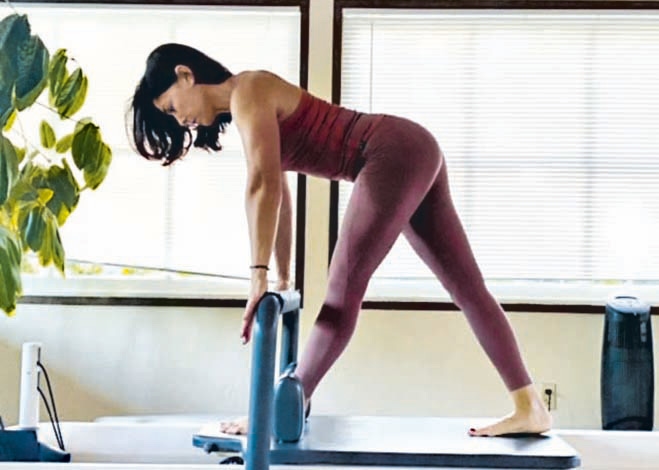
Addressing Sciatic Nerve Pain To Achieve Better Mobility
After years of distress, a fitness instructor can move comfortably again thanks to spine surgery.
Julie Spiker has always been active. From dancing to rock climbing to mountain biking, the Pilates instructor is used to being on her feet and on the go. But when she began experiencing sciatica — pain that radiated from her lower back down into her leg — she was forced to slow down.
“It started out pretty mild, mostly when I was rock climbing, and it would go away when I was done,” she says. “But soon it progressed. My back was hurting all the time, not just when I was climbing or being active.”
Spinal wear and tear
After an X-ray, Spiker’s doctor told her that she had degenerative disc disease, a condition in which the spinal discs that act as a cushion between the vertebrae become damaged over time. As the discs wear, the surrounding vertebrae can move abnormally and compress nearby nerves, causing pain or numbness. The damage could be caused by a fall or other accident, playing highly active sports or natural wear on the spine as a person ages.
In some cases, pain from degenerative disc disease can be treated with anti-inflammatory medication, ice and heat therapy, and rest. Spiker tried to manage her pain with treatments, including two steroid injections. “They didn’t really work,” she says. “The pain only went away for a week or so.”
Worsening pain
As Spiker’s pain progressed, she had to give up rock climbing. “When you’re climbing, you’re bending your back a lot, leaning back and looking up. It just got too painful,” she says. “I’d come down after a climb and almost be in tears.” She could still teach her Pilates classes, but even standing would hurt, and she found that forward folds and sitting were the only positions that relieved her pain.
Spiker had a second X-ray one year after her first, and the damage to her discs had progressed. “I knew it was much worse even without the X-ray,” she recalls. “I could feel it all the time.”
Seeking a Back Pain Solution
One of Spiker’s friends and rock climbing partners was Jodie Konigsberg, PA-C, a physician assistant at Adventist Health Sonora’s Northern California Spine Institute. After Spiker spent a year trying to manage her pain, Konigsberg referred her to Kevin Booth, MD, to find a solution.
She met with Dr. Booth in 2021, and together they determined that spinal fusion surgery was the right step to repair her damaged discs. In this operation, Dr. Booth placed small fragments of bone between Spiker’s vertebrae. Over time, the bones would fuse together, eliminating the movement of the vertebrae and alleviating her pain.
Spinal Mobility
Spiker recovered in the hospital for three days after the operation, and she says she felt immediate relief. “I was walking with a walker on day two. The incision was tender, and I was sore, but my sciatica pain was gone,” she recalls.
Because bone fusion happens gradually, full recovery can take several months. Spiker underwent several rounds of physical therapy and learned to listen to her body and understand her limits. “I was gardening at three months,” she says. “If it hurt, I would stop, but it was so good to start feeling like I was back to normal.”
Although she initially wanted to avoid surgery, Spiker says she’s glad she opted for the operation. “In the end, I knew I was in really good hands. It was a successful surgery, and I had great care,” she says. Now living free of lower back pain, she has returned to teaching Pilates and looks forward to rock climbing again soon, after getting treatment for an unrelated shoulder injury. “After coming out of the pain, I kept wondering, why didn’t I do this sooner? You don’t know how bad the pain is until it’s gone.”
How is your spine?
Although spinal cord damage can happen after a car accident or traumatic fall, slowly evolving injuries are far more common. Talk to your provider if you experience symptoms that may indicate a degenerative, or slowly progressive, spinal injury:
- Lack of coordination or feeling off balance
- Loss of sensation or weakness in the arms, legs or hands
- Feeling of instability in the neck or spine
- Chronic (long-term) back pain, with occasional periods of severe pain



